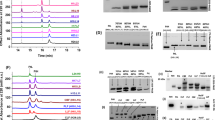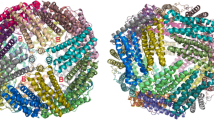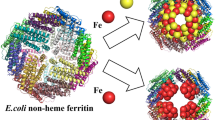Abstract
When either horse spleen apoferritin (containing more than 90% of L chains) or recombinant horse L apoferritin are modified with glycineamide or taurine in the presence of a water-soluble carbodiimide, a total of 11 to 12 carboxyl groups per subunit are modified, and iron incorporation is effectively abolished. In contrast, when horse spleen ferritin (containing on average 2500 atoms per molecule) is modified under similar conditions, seven to eight carboxyl groups are modified. When apoferritin is prepared from this modified ferritin, it retains full iron incorporation activity. Apoferritin in which seven to eight carboxyls per subunit have been modified by glycineamide can subsequently be modified by taurine; a total of three to four carboxyl groups are modified accompanied by total loss of iron incorporation. Additional studies confirm that three carboxyl groups per subunit are protected from modification by glycineamide by Cr(III) inhibition of iron incorporation. Using tandem mass spectroscopy we have looked for taurine-labelled peptides in tryptic digests of succinylated apoferritins after taurine modification. In the sample where the residues involved in iron uptake have been modified with taurine, we have identified the peptide:
This corresponds to residues 53–59 of the L subunit, where it is part of a region of the B-helix which is directed towards the inside of the apoferritin protein shell. The same peptide was identified using classical protein sequencing techniques after (1,2-3H)-taurine modification. We conclude that in L-chain apoferritins the Glu residues at positions 53, 56 and 57 are involved in the mechanism of iron incorporation. Glu 53 and 56 are conserved in L but not in H ferritins, and are located in close proximity to each other within the three-dimensional structure. There is ample room for rotation of Glu 57 to join with the other two to form an iron-binding site. This may represent a site of iron incorporation (most probably involving nucleation) unique to L-chain ferritins, and may explain the predominant L-chain involvement in conditions of iron overload.
Similar content being viewed by others
Author information
Authors and Affiliations
Additional information
Received: 31 May 1996 / Accepted: 17 September 1996
Rights and permissions
About this article
Cite this article
Crichton, R., Herbas, A., Chavez-Alba, O. et al. Identification of catalytic residues involved in iron uptake by L-chain ferritins. JBIC 1, 567–574 (1996). https://doi.org/10.1007/s007750050093
Issue Date:
DOI: https://doi.org/10.1007/s007750050093




